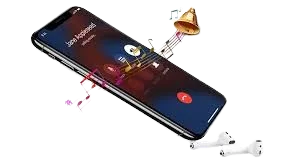Solving the Spotify Black Screen Issue
Spotify is a well-known streaming service for music, has millions of subscribers across the globe. Like all other software there are problems. A common issue that sufferers face is the Spotify white screen. It can happen on a variety of platforms like desktops as well as mobile and mobile devices. It can be frustration in the moment you’re just trying listening to your preferred music. In this post we’ll examine the root cause of black screens on Spotify black screen, and then how you can fix it so that you return to music without a hitch.

What Causes the Spotify Black Screen?
Before we begin the process of troubleshooting, we must know the reason Spotify may display the black screen. There are a variety of factors in play, for example:
Old Software: No matter if it’s the Spotify app, or the phone’s operating system the outdated version can create performance issues such as an unreadable screen.
Damaged cache files: Spotify makes use of cache files to make it easier for users to download songs more quickly. When these files are corrupted, this can cause Spotify to stop working.
Graphics Driver Issues: An incompatible or damaged graphics driver installed within your device can result in display issues, such as an unreadable screen.
Internet connectivity issues: Occasionally slow or unreliable internet connections may cause an app that is not loading properly, which results in a black or blank screen.
Background processes: Spotify may not load in a timely manner if any background processes are affecting the operation of Spotify.
Operating System or Hardware Issues Rarely, issues on your device’s or computer’s hardware, or perhaps your operating system can cause this issue.
How to Fix the Spotify Black Screen
This is how to troubleshoot and solve the issue several gadgets:
1. Restart the Spotify App
The most basic solution will often be the most efficient. You can close the Spotify application entirely (make sure that it’s being run in the background) then reopen it. It will provide the app with an opportunity to restart and could solve minor bugs that might cause your screen to turn black.
2. Check for Software Updates
Ensure that both the Spotify application and the phone’s operating system is up-to-date is crucial.
For Desktop To stream on your desktop: Visit the upper-left edge of Spotify Click on “Spotify,” and select “Check for Updates.”
Mobile Devices To download mobile apps: visit the Google Play Store (for Android) or the App Store (for iOS) and look for available software updates.
3. Clear Cache Files
Spotify saves cache data in order in order to speed up loading time However, over time these data files can get corrupted and cause issues. Clearing caches can assist in fixing the issue of black screens.
For Desktop:
Visit the Spotify Settings for the app.
Scroll towards”Storage.” Scroll to the “Storage” section and click on “Clear Cache.”
For Mobile:
On Android, go to “Settings” > “Apps” > “Spotify” > “Storage” > “Clear Cache.”
If you are using iOS Uninstall and install the application to clean the cache.
4. Update Your Graphics Drivers (for Desktop Users)
If you’re playing Spotify on a computer and you’re seeing a black or white screen, your graphics driver could require a new update.
For Windows For Windows: Launch the Device Manager Locate Display Adapters, click right-click on your graphics card and then select Update Driver.
To use macOS: macOS updates usually come with graphics drivers. So make sure that your computer is up-to-date via the System Preferences and Software Update.
5. Check Your Internet Connection
The slowness or infrequentity of your internet connection could hinder Spotify from working properly. Consider using a different connection and change your router’s settings if you need to. It is also possible to switch between mobile and Wi-Fi in order to test if that solves the problem.
6. Reinstall Spotify
If none of the previous methods work, a brand new installation could be needed. Disable Spotify on your device, reboot your device and then install the most recent version of the application.
7. Use Spotify Web Player
If you’re having trouble with the app it is possible to back to Spotify Web Player as an alternative. Start your browser, and then go to the Spotify Web Player to continue streaming your favourite tracks, without black screen issues.
Additional Tips for Preventing the Spotify Black Screen
Turn off Hardware Acceleration if your device is a desktop edition of Spotify disable hardware acceleration. This may help resolve issues with graphics. For this, follow these steps:
Go to Settings > Show Advanced Settings.
Scroll towards go to the “Compatibility” section and disable “Hardware Acceleration.”
Review System Requirements: Check that your device is compatible with the minimum requirements of Spotify’s system, particularly if you’re running an old device or operating system.
Stop Background Apps from Running: Shut down unneeded apps that are that are running in background because they could cause a loss of resources, which could stop Spotify from properly loading.
This Spotify black screen issue could be extremely frustrating, however the issue is usually resolved with handful of easy troubleshooting techniques. Keep your Spotify app and system current, cleaning cache files and ensuring that your connection to the internet is secure and stable, you’ll be able to return to listening to your music with no delays. If you are still having issues then reinstalling the application or switching to a web player could provide an interim solution.
If you’ve figured out the most common reasons and the options, you’re now prepared to solve this problem and enhance the quality of your Spotify experience. Happy listening!


